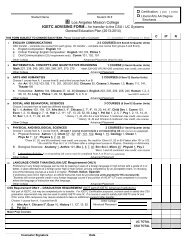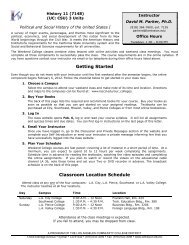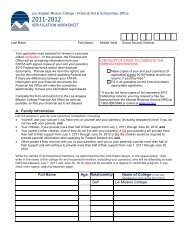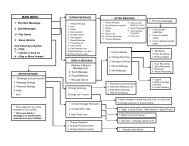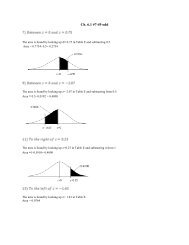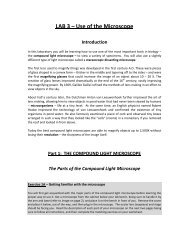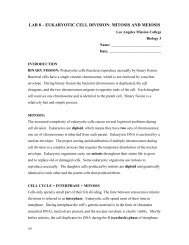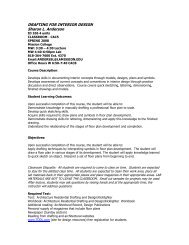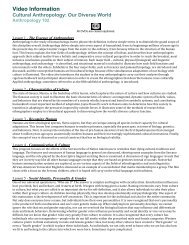You also want an ePaper? Increase the reach of your titles
YUMPU automatically turns print PDFs into web optimized ePapers that Google loves.
<strong>Enzymes</strong><br />
Since it would be impossible for living cells to control and coordinate their many biochemical<br />
reactions by adjusting the temperature, cells rely on biological catalysts. The biological<br />
catalysts in cells are proteins called enzymes, and just about every biochemical reaction in a cell<br />
has its own specifically shaped enzyme catalyst. By controlling the production and activity of<br />
enzymes (which are encoded by genes), cells control and coordinate their biochemical activity,<br />
i.e., their metabolism.<br />
As with any catalyst, an enzyme works by binding and positioning the reactant(s) for a specific<br />
reaction in a way that lowers the activation energy. The biochemical reactant(s) that a given<br />
enzyme binds to is referred to as its substrate, and the part of the enzyme that binds the substrate<br />
is called the active site. The diagram below illustrates this for the enzyme sucrase and its<br />
substrate sucrose (the suffix –ase denotes an enzyme, whereas –ose denotes a carbohydrate):<br />
As you can see, the enzyme sucrase, a protein, binds directly to its substrate sucrose and<br />
positions it so the covalent bond between the monosaccharides glucose and fructose is strained in<br />
a way that lowers the activation energy enough to break the bond. This yields the products<br />
glucose and fructose, which are then released. The enzyme is free to repeat this process,<br />
catalyzing the reaction over and over again until it is no longer active.<br />
Like any protein, the action of an enzyme is dependent upon its unique three-dimensional shape.<br />
Anything that causes an enzyme to adopt a non-functional shape is said to denature the enzyme.<br />
Factors that can denature an enzyme and cause it to become non-functional include changes in<br />
temperature, pH and salt concentration. For example, most human enzymes have evolved to<br />
function best at normal cellular conditions: 37 o C, pH 7.4 and 0.9% NaCl. If the temperature,<br />
pH or salt concentration deviates significantly from the “normal” state, enzymes and other<br />
proteins will begin to denature and lose their function. This is largely why high fevers and<br />
deviations in pH (acidosis, alkalosis), for example, can be so dangerous.<br />
In today’s lab you will examine the functions of three digestive enzymes and test the effect of<br />
denaturing conditions on one of these enzymes…<br />
3



